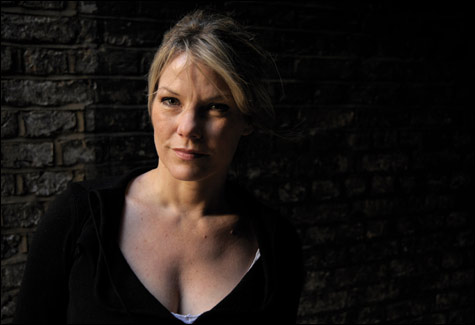
TOXIC ASSETS: Stockbridge’s novel is a Dickensian picaresque — and meditation on the commoditization of beauty. |
| Grace Hammer | By Sara Stockbridge | W.W. Norton | 288 pages | $23.95 |
What price beauty? That's the question lovely Grace Hammer has to answer as her world begins to fall apart. Pretty Grace, after all, is a thief; she knows better than many that everything has a market value. A young woman in Victorian London, she supports herself and four children by picking the pockets of gentry unlucky enough to wander onto her Whitechapel turf. Before Grace came to the big city, she briefly tried an honest life in service; she stole "the mistress's favourite diamonds" only after being wrongly accused and dismissed. But her sweet tooth for pretty things (men, jewelry) has caught up with her. Another thief, from whom she lifted a ruby necklace, is on her trail, and safety, she is learning, is priceless.Grace Hammer, the debut novel by Londoner Sara Stockbridge, reads like a classic picaresque — Oliver Twist, only with Nancy as a kinder, prettier Fagan. But as you might expect from Stockbridge — who is identified as an actress, a model, and the former "muse" for fashion designer Vivienne Westwood — it's also a meditation on the commodification of beauty. Grace's assets are listed as so many options "shining like the cherry on the cake." And the ruby necklace, the centerpiece among a "parade of shining stones to shame the night sky," is described in greater detail than many of Grace's acquaintances.
Stockbridge's fascination with unbridled capitalism works perfectly in this setting. Everything — including most of the women we encounter — is for sale, or in the business of taking and selling. The Victorian underworld maintains its hold on contemporary authors. From the fantastic (Michel Faber's The Crimson Petal and the White) to the anthemic (Sarah Waters's lesbian take on Oliver Twist, Fingersmith), there's something about this period. Sometimes it's our collective memory of Dickens, or our love-hate relationship with that era's strict class stratifications. In Grace's world, we also get the immediacy of life without safety nets. Although the Ripper killings are the talk of the town, death has always been common here. "He took to smoking opium," we hear of one character. "After a week he had become the colour of Limehouse itself, forgetting a little more each day about the world above." Grace herself is in grave danger, fleeing the brutal Horatio Blunt. And as the book comes to a crisis, she considers another life, one that would entail her cashing out, so to speak.
Not that Stockbridge gets hung up on theory. She has a fast, easy prose style spiced with enough unsavory details — the killings, the poverty — to place her characters, even as she backtracks to provide history. Nothing in this world is pleasant. In fact, Grace's resolution, when it finally comes, is a little too easy. She and her children have been threatened, and their home has been vandalized, but it's the murder of an acquaintance that does it. "Grace cursed herself for her weakness, the glitter in her stupid eyes. . . . The ruby was a useless trophy." The reader may have reached this conclusion several bodies earlier, but Stockbridge gives us no sense of growing enlightenment, no cumulative awareness, in this muddy, muddled world.